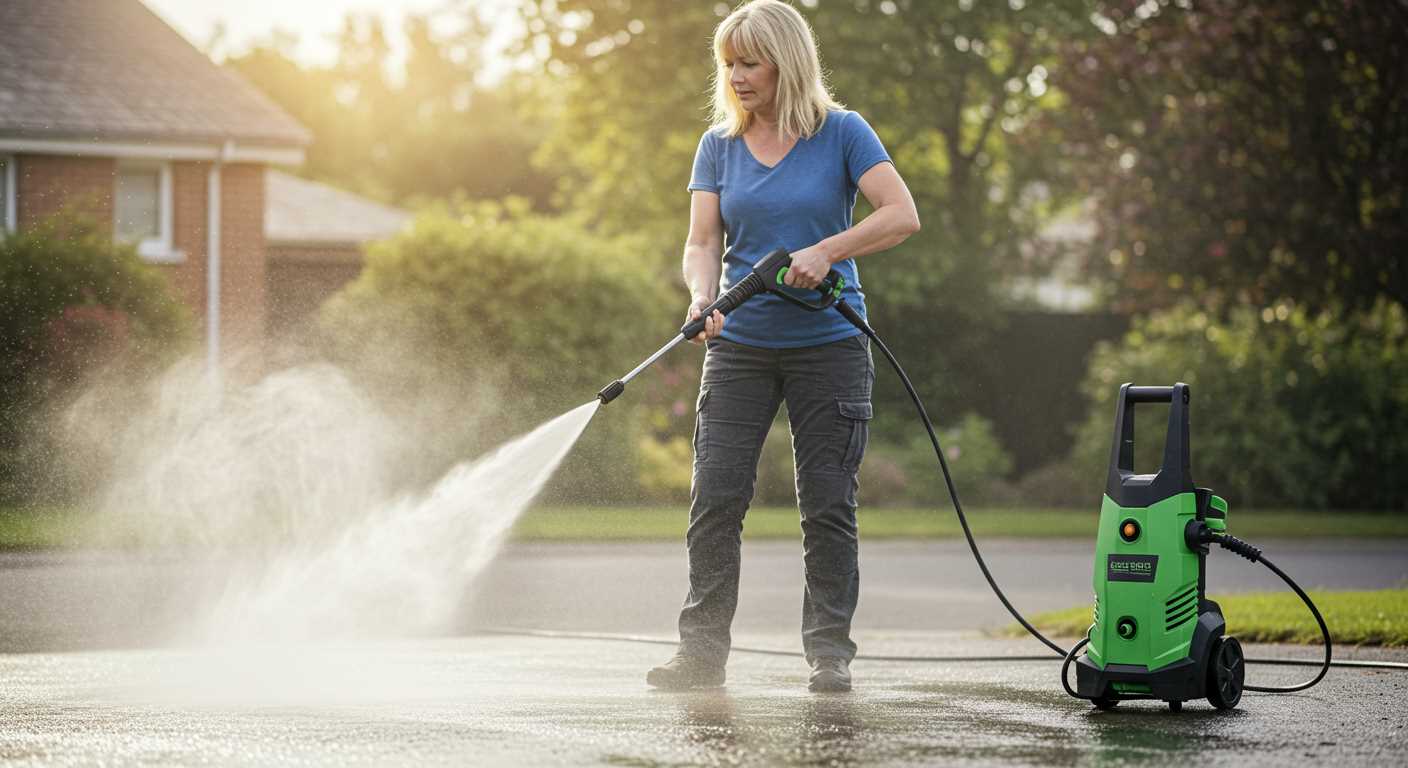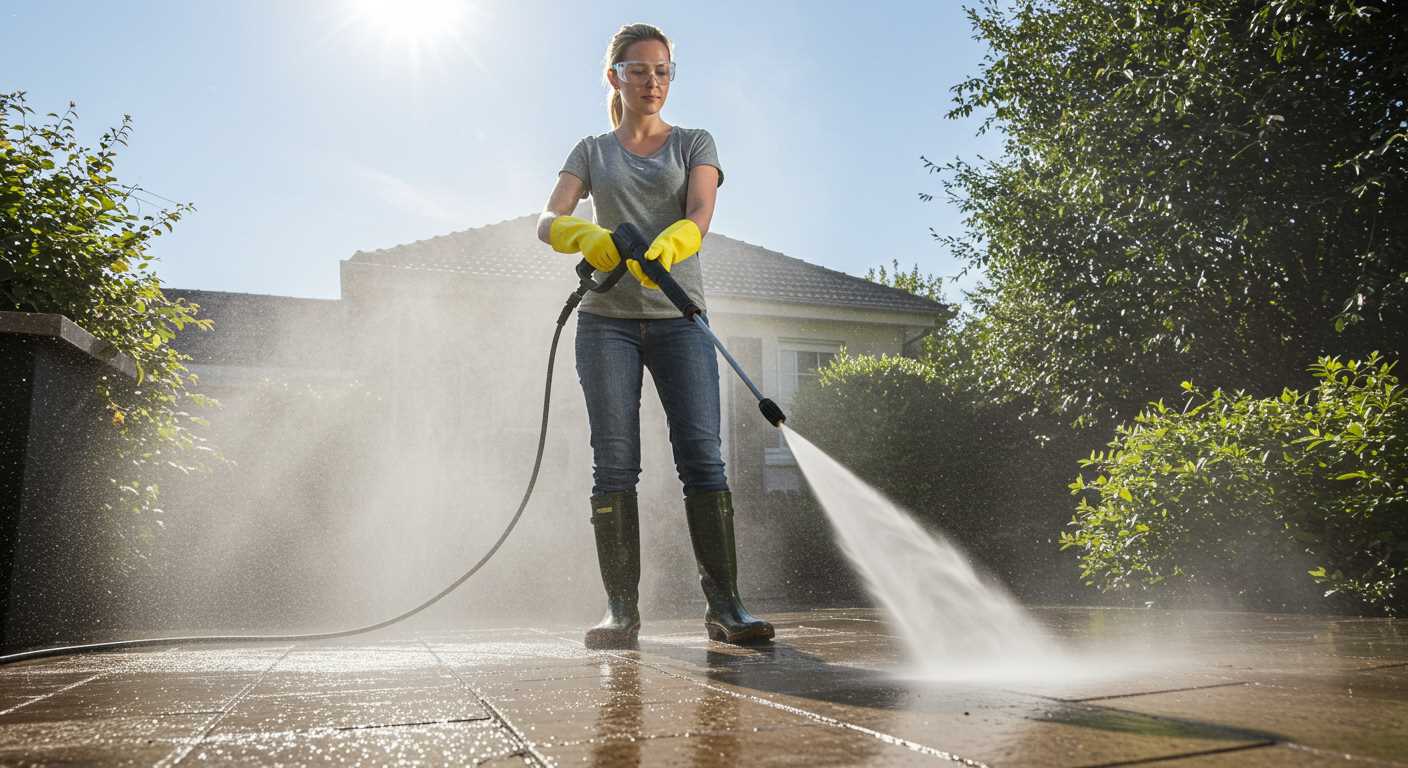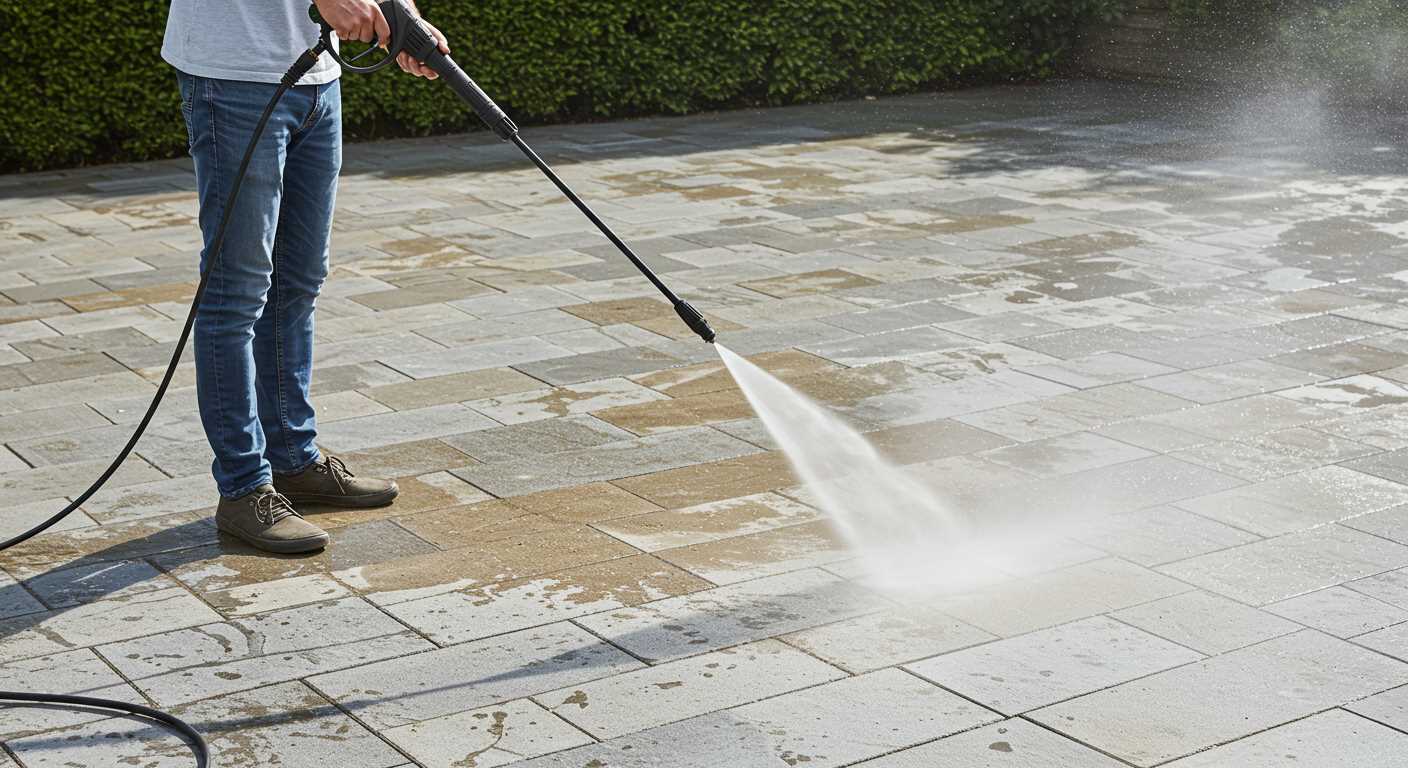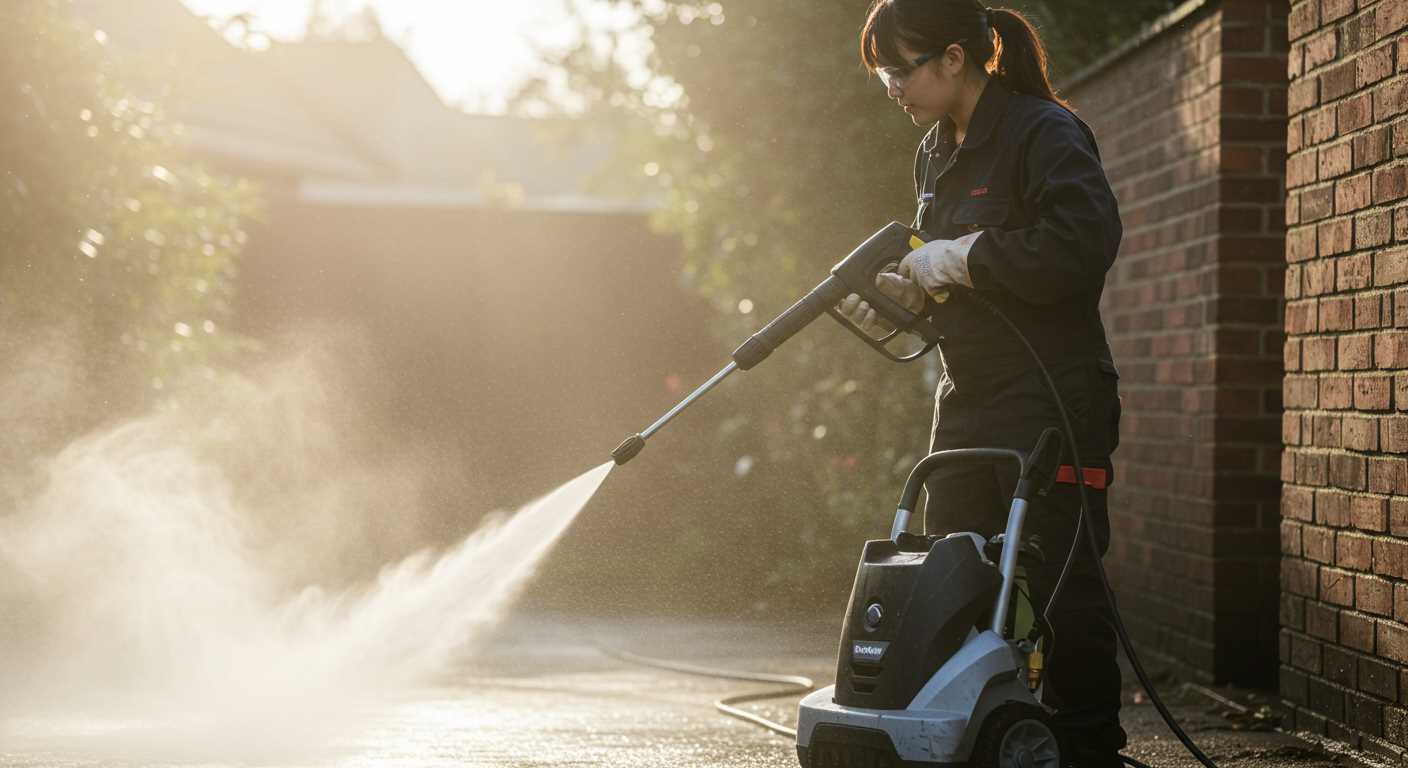



Using liquid designed for washing dishes in a high-pressure cleaner is not advisable. While it may seem like a convenient option for removing grime, the formulation can create excess foam, leading to operational issues and potential damage to the machine. I have seen first-hand how such products can hinder performance and cause clogs in hoses and nozzles, disrupting workflow significantly.
Instead, I recommend using cleaners specifically formulated for high-pressure applications. These specialized formulations provide effective cleaning without the negative side effects associated with typical household liquids. Over my ten years in the industry, I’ve tested numerous brands, and products tailored for pressure cleaners consistently outperform general-purpose alternatives.
When selecting a cleaner, consider its compatibility with your machine’s specifications. Always check the manufacturer’s guidelines to ensure you choose a compatible solution that does not void the warranty or harm vital components. Investing in the right product can enhance efficiency and longevity of your equipment.
Is Dawn Dish Soap Safe for Pressure Washers?
I recommend against using this brand of cleaner in high-powered cleaning machines. While it can effectively cut through grease and grime when used manually, its formulation may create unwanted foam when applied with stronger engines. This excess foam can obstruct the nozzle and affect the unit’s performance.
If you aim to achieve optimal results and maintain your equipment’s longevity, opt for a cleaner specifically designed for these devices. Such products typically offer better compatibility, ensuring that the internal components remain undamaged over time. They are engineered to work with water pressure, allowing for effective cleansing without risking harm to your machinery.
In my extensive experience in testing various cleaners, I have found that products labelled for use with heavy-duty machinery are also better at rinsing away residues without leaving streaks or damage. Always check your manufacturer’s guidelines before adding any substance to your cleaning setup.
Understanding the Ingredients in Dawn Dish Soap
Recognising the components in this cleaning product reveals its efficacy and potential issues when utilised in high-pressure machines. The primary ingredients include surfactants, solvents, and a range of additives that aid in soil removal and foaming.
Main Ingredients

- Surfactants: These are the key agents that help lower surface tension, allowing the liquid to spread and penetrate grime effectively. Common surfactants found in this formulation are sodium lauryl sulfate and sodium laureth sulfate.
- Solvents: Often, organic solvents are included to dissolve oils and enhance cleaning capabilities. These can sometimes be aggressive and may affect certain surfaces or materials when under high pressure.
- Additives: Fragrances and colourants are added for consumer appeal but may lead to residues that could prove problematic in cleaning systems if not rinsed thoroughly.
Impact on Equipment

Using this product in a high-stakes cleaning environment might create unwanted foaming, potentially clogging hoses and components. Additionally, residual solvents can deteriorate seals over time, leading to malfunctions. Testing a small quantity on a discreet area prior to widespread application is prudent to gauge compatibility.
Understanding these elements can help you make informed decisions about your cleaning regimen, ensuring both thoroughness and the longevity of your machinery.
Compatibility of Dish Cleaning Liquid with Detergents Used in High-Pressure Cleaners
I recommend being cautious when mixing a common kitchen cleaner with dedicated cleaning agents designed for high-performance machines. Although the kitchen cleaner may effectively remove grease and grime, it lacks the specific formulation created for outdoor cleaning tasks, which could lead to suboptimal results or equipment issues.
Pros and Cons of Using Kitchen Cleaning Liquid
While there are some benefits to using this product, such as availability and affordability, the drawbacks may outweigh these advantages. The following table outlines key considerations:
| Pros | Cons |
|---|---|
| Readily available in most households | Not designed for high-performance machines |
| Effective at tackling certain types of stains | May create excessive foam, leading to clogging issues |
| Usually low-cost | Potentially damaging to seals and hoses |
Recommended Alternatives
For optimal performance, I advise investing in specific detergents tailored for high-pressure applications. They are formulated to work effectively with the machine’s pump and will not compromise the integrity of your equipment. This approach ensures you achieve the best results without risking damage.
Impact of Dish Detergent on Washer Components
Using traditional cleaning agents can lead to various concerns regarding the integrity of machine components. While many users believe that household cleaners will not harm their equipment, my experience suggests otherwise. The ingredients in these cleaners can adversely affect seals, hoses, and pumps within the unit.
Potential Damage to Seals and Hoses
- Surfactants can degrade rubber and plastic over time, leading to leaks and reduced performance.
- Excessive foaming may cause pressure build-up, which can strain connections and fittings, resulting in potential damage.
- Chemicals may accelerate corrosion on metal parts, especially if not properly rinsed after use.
Long-term Effects on Pump Mechanisms
- Residue build-up from improper cleaning agents can obstruct filters, reducing the overall efficiency of the device.
- Incompatibility with internal components may lead to premature wear, necessitating costly repairs or replacements.
- Using non-recommended substances can void warranties, leaving you responsible for any repairs or damages incurred.
To maintain optimal performance and longevity, always opt for products specifically designed for cleaning machinery. This will ensure that all components remain in good condition and that the cleaning process is as efficient as possible.
Recommended Dilution Ratios for Safe Use
For optimal results without compromising equipment integrity, I recommend diluting the cleaning agent at a ratio of 1:10. This means mixing one part of the agent with ten parts of water. This concentration effectively tackles light to moderate grime while minimising any potential residue left behind.
For tougher stains or heavily soiled surfaces, a 1:5 ratio can be used. This stronger solution provides additional cleaning power, but caution is advised; ensure your equipment can handle this concentration without adverse effects on its components.
Always test the mixture on a small, inconspicuous area before applying it to a larger surface to assess compatibility and effectiveness. If you notice any unintended reactions, dilute further to avoid damage.
When using a foam nozzle, I suggest starting with a 1:8 mix. This ensures a consistent foam coverage which helps lift dirt and stains effectively, enhancing the overall cleaning experience.
Be mindful that using a concentrated solution directly may lead to residue buildup and potential clogs. Regular maintenance of your equipment is crucial when employing any cleaning agent to prolong its lifespan and performance.
Comparing Dawn Dish Soap to Other Cleaning Solutions
I recommend considering alternatives to regular dish agent when addressing cleaning tasks with high-output equipment. While the commonly used product may seem effective, there are several specially formulated cleaners that outperform it in specific applications.
Specialised car wash solutions, for instance, are designed to break down road grime without harming paint finishes. These products are pH-balanced, ensuring that they won’t strip wax or protective coatings off surfaces. They typically foam better than a standard dish product, allowing for superior cling and dwell time on vertical surfaces.
Multi-surface cleaners often contain surfactants that tackle oils and grease with greater efficacy. These formulations can tackle tougher stains more effectively and are usually designed to prevent streaking on glass and other shiny surfaces.
For heavy-duty jobs, industrial-strength formulations exist that target embedded dirt and grime, often using enzymes or other active ingredients that provide deeper cleaning power. Such options can drastically reduce cleaning time and effort, especially for outdoor surfaces with significant accumulations of mould or mildew.
It’s also worthwhile to note that eco-friendly cleaners have gained popularity for their biodegradable ingredients and lower environmental impact. Many of these alternatives are as effective as conventional chemical agents and are often free from harsh solvents.
In conclusion, while a common dish cleaner might work in a pinch, utilising a specialized cleaning solution tailored for the task at hand will yield superior results and protect your equipment from potential damage.
Testing for Streaks or Residue After Use

To ensure optimal results after utilising a particular cleaning agent, thorough testing for streaks or residue is essential. I recommend conducting tests on a small, inconspicuous area first. Apply the diluted cleaning solution and observe the surface after application. Allow it to dry completely to assess any potential marks or residues left behind.
Use a clean, lint-free cloth to wipe the surface. If any streaks or residue are noticeable, adjust the dilution ratio of the cleaning product. A higher water-to-cleaning agent ratio often aids in decreasing any leftover residue.
Surface-Specific Testing
Different materials react uniquely. For porous surfaces like brick or concrete, the likelihood of residue is higher, so additional rinsing may be necessary. Non-porous surfaces, such as metal or glass, typically show less residue but still require inspection for clarity.
Post-Use Rinsing
Regardless of the surface, a thorough rinse with clean water following the cleaning process is crucial. This practice helps eliminate any remaining residues and enhances the overall finish. Additionally, consider using a separate attachment designed for rinsing to achieve optimal results, minimising the risk of streaks. Keeping consistent records of your results can also assist in fine-tuning your cleaning process over time.
Environmental Considerations of Using Dish Cleaning Agents
The use of cleaning agents in high-pressure systems raises important environmental questions. Here’s what I’ve found based on my years of experience in the industry.
-
Biodegradability: Many household cleaning agents break down more quickly than industrial products. Look for brands that specify their ingredients are biodegradable. This minimizes the impact on local ecosystems.
-
Aquatic Toxicity: Always check the toxicity levels of the agent you choose. Some components can harm aquatic life if they enter water systems. Ensure the selected product lists low aquatic toxicity.
-
Scent Compounds: Fragrances can contribute to air pollution and cause allergic reactions. Opt for unscented or naturally scented options to reduce potential irritants in the environment.
-
Concentration: Using concentrated solutions reduces waste. Diluting only as needed ensures more responsible consumption while maintaining cleaning effectiveness.
-
Packaging: Select products that come in recyclable or biodegradable packaging. This reduces landfill waste and promotes sustainability.
-
Water Usage: Applying methods that optimise water use not only conserves resources but also reduces the volume of chemicals released into the environment.
In conclusion, being mindful of the product choice can significantly mitigate environmental impacts. Prioritising biodegradable options, understanding toxicity levels, and optimising water usage contribute to a more sustainable cleaning practice. Make sure to evaluate each product’s merits carefully before making a decision.
Real User Experiences with Dawn in Pressure Washers
In my extensive experience testing various brands of cleaning equipment, I’ve observed a considerable variety of opinions regarding the use of certain liquid cleaners in high-pressure machines. Based on numerous user reports, many enthusiasts and professionals share positive experiences while employing this particular brand in their machines.
User Feedback and Results

A significant number of users have reported effective removal of grime and dirt when utilising this liquid in their units. The consensus indicates satisfaction with its ability to break down tough stains, particularly on surfaces like driveways and patios.
However, some users expressed concerns about potential residue left behind after use. Cleaning enthusiasts who diluted the liquid properly reported minimal streaking, suggesting a careful approach improves outcomes dramatically.
<h3.Table of User Experiences
| User Type | Experience Summary | Streaks/Residue | Recommendations |
|---|---|---|---|
| Homeowner | Effective for driveway cleaning | Minimal with correct dilution | Mix with water at 1:10 ratio |
| Professional Cleaner | Excellent without damaging surfaces | Occasional streaking reported | Rinse thoroughly post-cleaning |
| DIY Enthusiast | Great at removing grease and oil | None if diluted correctly | Use a spray bottle for application |
Experiences vary with each user’s technique and the specific grime they are tackling. Those who followed dilution guidelines found success, while improper usage sometimes led to unwanted residues. Sharing these insights has helped many make informed decisions about cleaner selection and usage.







